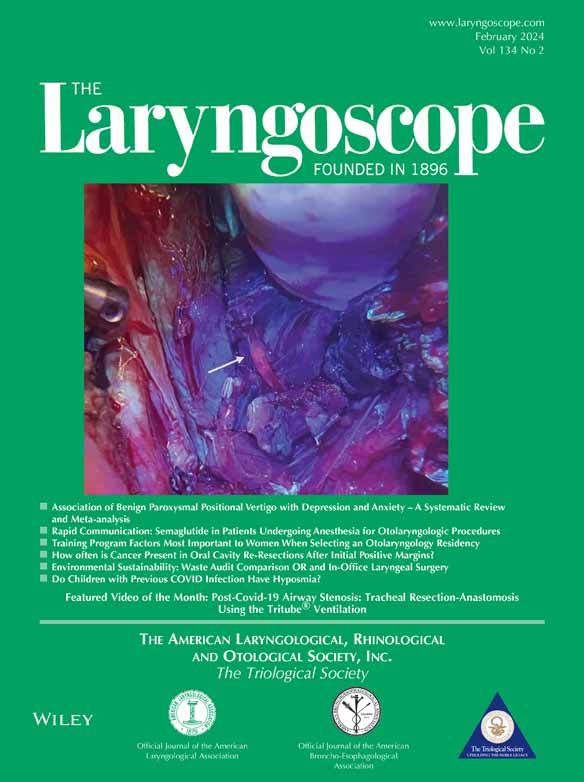Type 3 Laryngeal Clefts Presenting with Upper Airway Obstruction without Aspiration
Editor's Note: This Manuscript was accepted for publication on June 07, 2023.
The authors have no other funding, financial relationships, or conflicts of interest to disclose.
Abstract
Traditionally, otolaryngologists are taught that the defining clinical feature of a laryngeal cleft is aspiration. However, in a small subset of patients—even those with extensive clefts—the sole presenting feature may be airway obstruction. Here, we report two cases of type III laryngeal clefts that presented with upper airway obstruction without aspiration. The first patient was a 6-month-old male with history of tracheoesophageal fistula (TEF) who presented with noisy breathing, initially thought to be related to tracheomalacia. Polysomnogram (PSG) demonstrated moderate OSA and modified barium swallow (MBS) was negative for aspiration. In-office laryngoscopy was notable for a mismatch of tissue in the interarytenoid region. A type III laryngeal cleft was identified on bronchoscopy, and airway symptoms resolved after endoscopic repair. The second patient was a 4-year-old male with a diagnosis of asthma who presented with progressive exercise-induced stridor and airway obstruction. In-office flexible laryngoscopy revealed redundant tissue in the posterior glottis and MBS was negative for aspiration. He was found to have a type III laryngeal cleft on bronchoscopy and his stridor and upper airway obstruction resolved after endoscopic repair. While aspiration is the most common presenting symptom of a laryngeal cleft, it is important to consider that patients can have a cleft in the absence of dysphagia. Laryngeal cleft should be included in the differential diagnosis for patients with obstructive symptoms not explained by other etiologies and in those with suspicious features on flexible laryngoscopy. Laryngeal cleft repair is recommended to restore normal anatomy and relieve obstructive symptoms. Laryngoscope, 134:977–980, 2024




